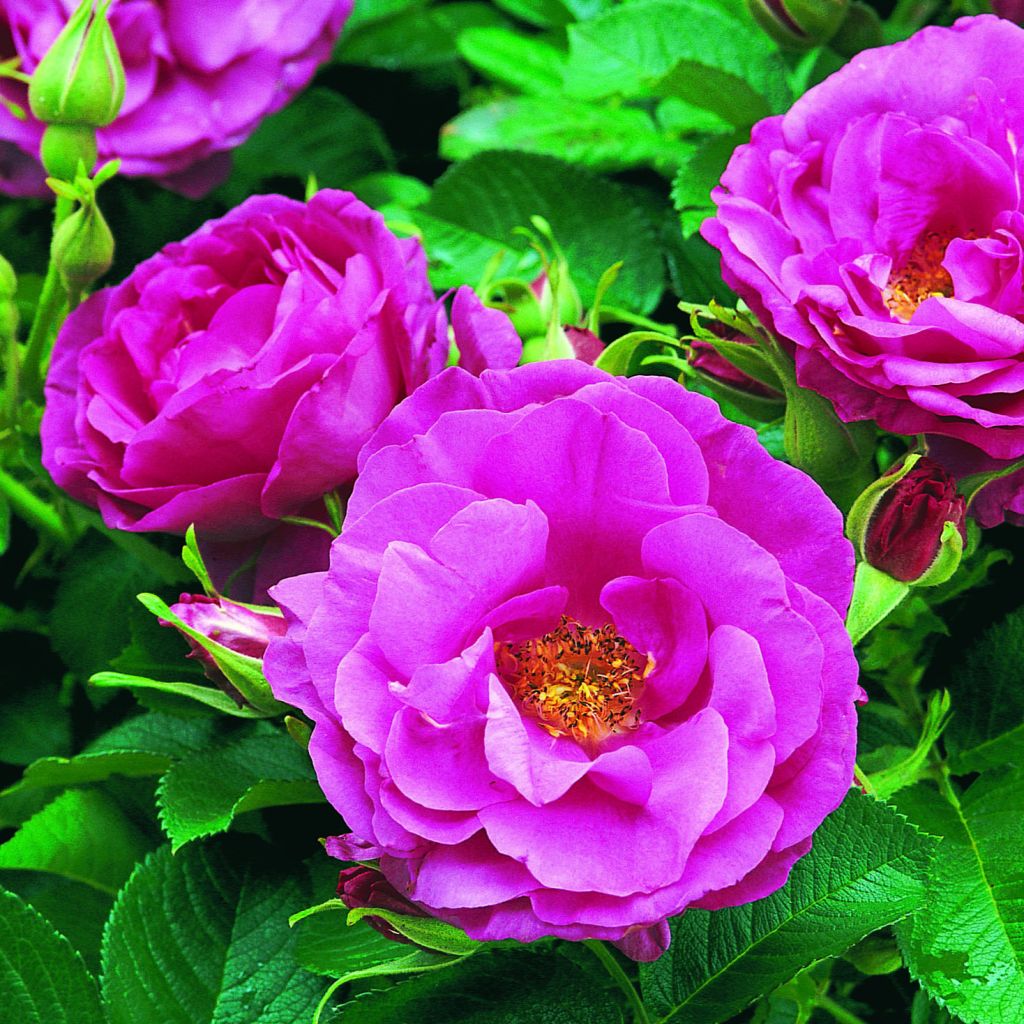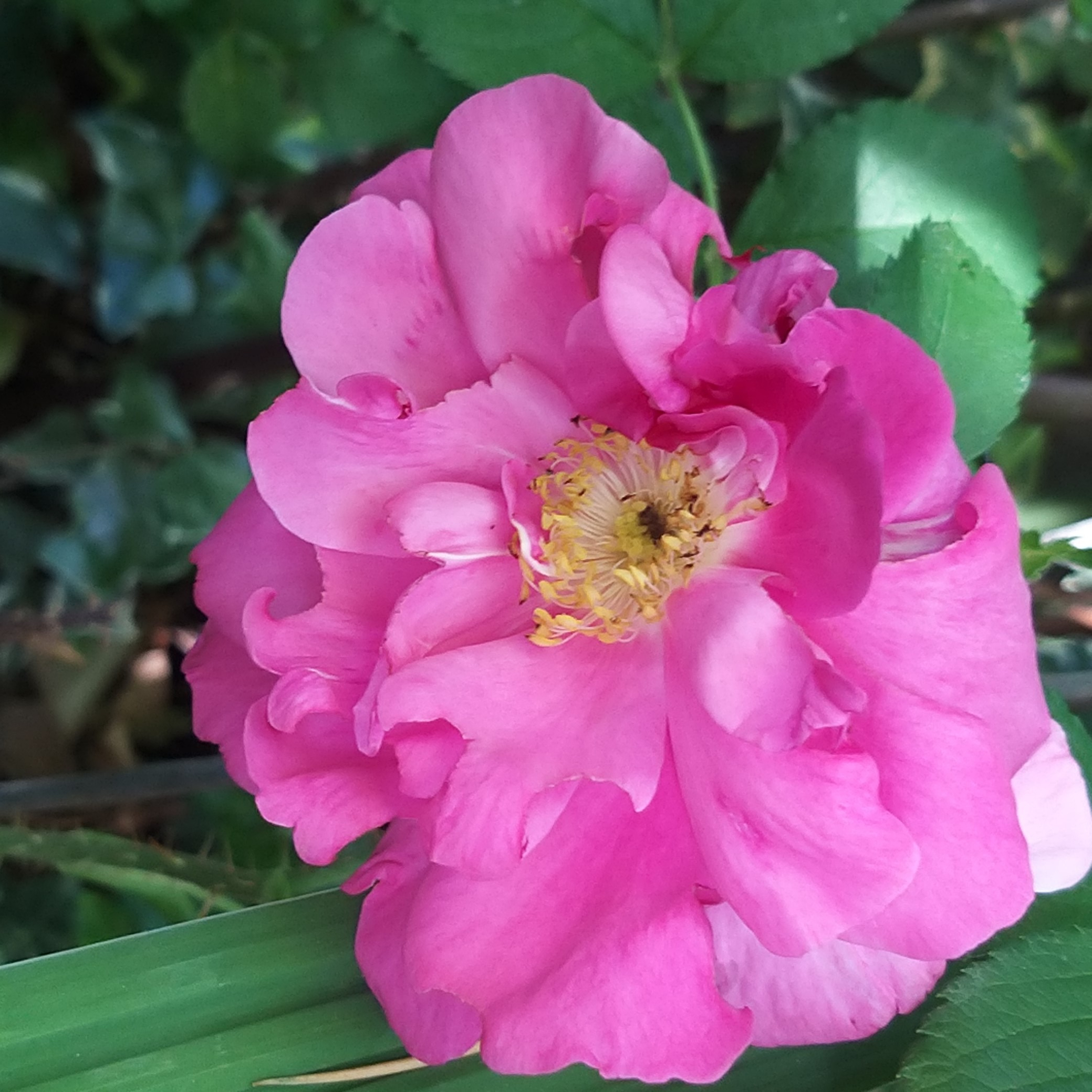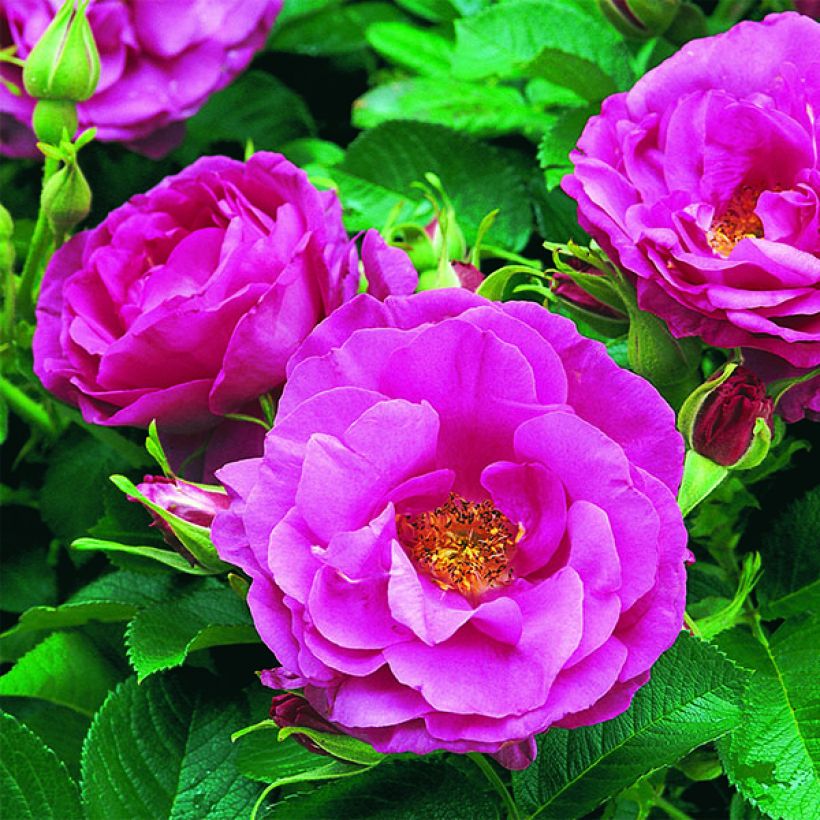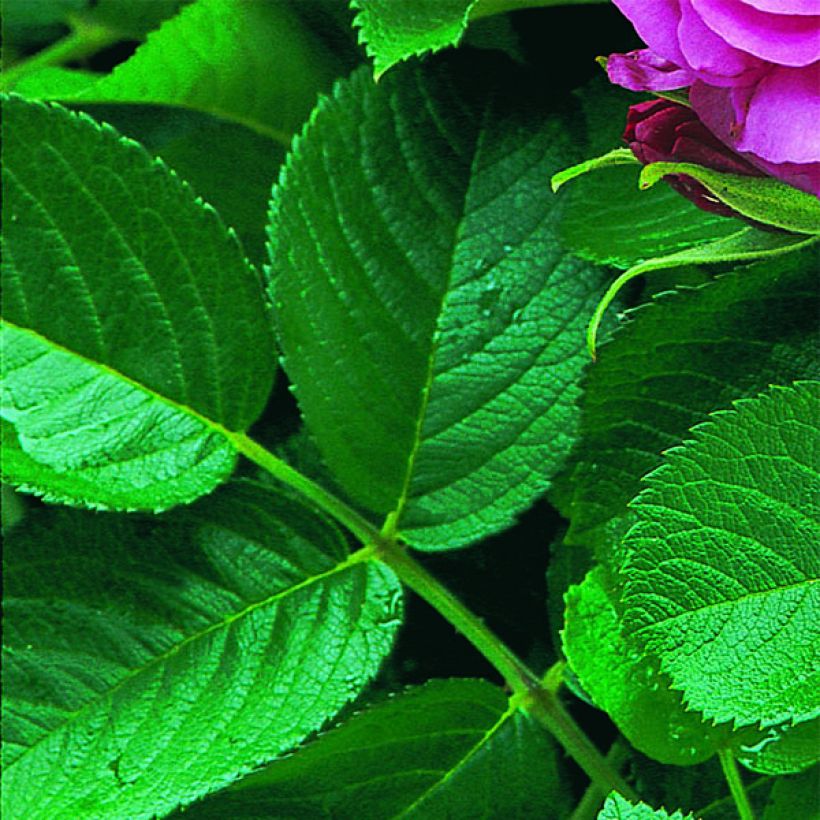Plantfit
Log in / Register
Existing customer?
New customer?
Create an account to track your orders, access our customer service and, if you wish, make the most of our upcoming offers.
My Account
Hello
Shipping country and language
Your country of residence may be:
For a better user experience on our website, you can select:
Your shipping country:
Andorra
Austria
Belgium
Bulgaria
Croatia
Czechia
Denmark
Estonia
Finland
France
Germany
Greece
Hungary
Iceland
Ireland
Italy
Latvia
Lithuania
Luxembourg
Monaco
Netherlands
Poland
Portugal
Romania
Slovakia
Slovenia
Spain
Sweden
Switzerland
Language:
French
English


Rosier anglais Wild Edric® - Aushedge
View more pictures
Hide images

Thierry P.

Floraison de mai - image 3
Thierry P. • 84 FR
Rosa x rugosa 'Wild Edric' - Rugosa Rose
Rosa x rugosa Wild Edric® - Aushedge
Arrived in very bad condition (once again due to transportation), I potted it on my terrace and pruned everything that could be pruned to give it a chance. It started growing new leaves and two rose buds appeared this week. Phew, I think I managed to save it. I think I rescued it and will plant it in the ground in the autumn. Revised Text: Arriving in very poor condition (once again due to transportation), I potted it on my terrace and pruned all that could be pruned to give it a chance. It started producing new leaves and two rose buds have appeared this week. Phew, I think I have successfully rescued it. I believe I have saved it and will plant it in the ground in the autumn.
Nadia, 27/05/2020
Order in the next for dispatch today!
Dispatch by letter from €3.90.
Delivery charge from €5.90 Oversize package delivery charge from €6.90.
More information
This item is not available in your country.
Select delivery date,
and select date in basket
This plant carries a 24 months recovery warranty
More information
We guarantee the quality of our plants for a full growing cycle, and will replace at our expense any plant that fails to recover under normal climatic and planting conditions.
From €5.90 for pickup delivery and €6.90 for home delivery
Express home delivery from €8.90.
From €5.90 for pickup delivery and €6.90 for home delivery
Express home delivery from €8.90.

Does this plant fit my garden?
Set up your Plantfit profile →
Description
The English rose 'Wild Edric' is a sturdy variety derived from Rosa rugosa. It is exceptionally vigorous, hardy, reliable, and capable of thriving under challenging conditions. Its semi-double flowers, deep pink with purple and mauve reflections, are powerfully scented and repeat regularly on a rounded bush. It is also comfortable in flower beds, in slightly wild areas of the garden, or a countryside hedge. This variety combines qualities and, for all these reasons, deserves to be included in every garden.
This rose forms a bush with sturdy, thorny and ramified stems of 1.25 m (4ft) in all directions, covered with beautiful embossed and shiny foliage. It shows excellent resistance to cold and diseases, tolerates poor soils, provides a perpetual flowering and is pretty fruiting. This variety combines the beauty of flowers and their beautiful size and an enchanting fragrance. At first glance, it is both powerful and delightful. It is complex and different depending on whether it emanates from the petals or the stamens: the petals exhale a fragrance of old rose, with notes of watercress and cucumber, while the stamens develop a clove aroma. The flowers are born from charming pointed buds, purple-pink, which gradually open into semi-double flowers of deep velvety pink, nuanced with purple and mauve, revealing a bouquet of golden stamens. This variety requires no treatment. It won first prize in the BARB trials in Pencoed, Wales.
The 'Wild Edric' will be used in all problematic situations, partially shaded areas, and poor soil, where other varieties struggle to grow and bloom. If it is planted in ideal conditions, it will, of course, flower even more abundantly. It can be paired with other rugosa roses (Rosa rugosa scabrosa, Rosa rugosa rubra, Rosa rugosa alba) in flowering shrub hedges. Still, it also goes very well with old or contemporary roses.
"Wild Edric" was a Saxon Lord from Shropshire who, it is said, married a fairy queen. One day, he reproached her, and she disappeared. Legend has it that his ghost haunts the hills in search of her.
Obtained by David Austin.
Rosa x rugosa 'Wild Edric' - Rugosa Rose in pictures




Plant habit
Flowering
Foliage
Botanical data
Rosa
x rugosa
Wild Edric® - Aushedge
Rosaceae
Cultivar or hybrid
Planting and care
Plant your English 'Wild Edric' Rose in a sunny or lightly shaded location. English roses are tolerant, but they won't tolerate excessive limestone. They adapt to any garden if the soil is well-worked and sufficiently rich. To plant your rose, work the soil by crumbling it and place an amendment, such as blood, fish and bone, at the bottom of the planting hole. Water generously after planting to remove any air pockets. Water regularly for a few weeks to facilitate rooting.
Pruning English roses is generally necessary for flowering, although varieties derived from rugosa, like 'Wild Edric', can do without it. At the end of winter, shorten the branches to 3-5 buds above ground level (at the lowest), choosing an outward-pointing bud for a more elegant habit. Take advantage of this pruning to remove dead wood and unsightly branches. Prune at an angle above a bud. As the flowers bloom, remove faded flowers, stimulating the development of other buds.
Roses may appear unsightly at the end of summer due to staining. However, this is a natural phenomenon and does not affect rose growth.
Planting period
Intended location
Care
- , onOrder confirmed
Reply from on Promesse de fleurs
Roses by purpose
Haven't found what you were looking for?
Hardiness is the lowest winter temperature a plant can endure without suffering serious damage or even dying. However, hardiness is affected by location (a sheltered area, such as a patio), protection (winter cover) and soil type (hardiness is improved by well-drained soil).

Photo Sharing Terms & Conditions
In order to encourage gardeners to interact and share their experiences, Promesse de fleurs offers various media enabling content to be uploaded onto its Site - in particular via the ‘Photo sharing’ module.
The User agrees to refrain from:
- Posting any content that is illegal, prejudicial, insulting, racist, inciteful to hatred, revisionist, contrary to public decency, that infringes on privacy or on the privacy rights of third parties, in particular the publicity rights of persons and goods, intellectual property rights, or the right to privacy.
- Submitting content on behalf of a third party;
- Impersonate the identity of a third party and/or publish any personal information about a third party;
In general, the User undertakes to refrain from any unethical behaviour.
All Content (in particular text, comments, files, images, photos, videos, creative works, etc.), which may be subject to property or intellectual property rights, image or other private rights, shall remain the property of the User, subject to the limited rights granted by the terms of the licence granted by Promesse de fleurs as stated below. Users are at liberty to publish or not to publish such Content on the Site, notably via the ‘Photo Sharing’ facility, and accept that this Content shall be made public and freely accessible, notably on the Internet.
Users further acknowledge, undertake to have ,and guarantee that they hold all necessary rights and permissions to publish such material on the Site, in particular with regard to the legislation in force pertaining to any privacy, property, intellectual property, image, or contractual rights, or rights of any other nature. By publishing such Content on the Site, Users acknowledge accepting full liability as publishers of the Content within the meaning of the law, and grant Promesse de fleurs, free of charge, an inclusive, worldwide licence for the said Content for the entire duration of its publication, including all reproduction, representation, up/downloading, displaying, performing, transmission, and storage rights.
Users also grant permission for their name to be linked to the Content and accept that this link may not always be made available.
By engaging in posting material, Users consent to their Content becoming automatically accessible on the Internet, in particular on other sites and/or blogs and/or web pages of the Promesse de fleurs site, including in particular social pages and the Promesse de fleurs catalogue.
Users may secure the removal of entrusted content free of charge by issuing a simple request via our contact form.
The flowering period indicated on our website applies to countries and regions located in USDA zone 8 (France, the United Kingdom, Ireland, the Netherlands, etc.)
It will vary according to where you live:
- In zones 9 to 10 (Italy, Spain, Greece, etc.), flowering will occur about 2 to 4 weeks earlier.
- In zones 6 to 7 (Germany, Poland, Slovenia, and lower mountainous regions), flowering will be delayed by 2 to 3 weeks.
- In zone 5 (Central Europe, Scandinavia), blooming will be delayed by 3 to 5 weeks.
In temperate climates, pruning of spring-flowering shrubs (forsythia, spireas, etc.) should be done just after flowering.
Pruning of summer-flowering shrubs (Indian Lilac, Perovskia, etc.) can be done in winter or spring.
In cold regions as well as with frost-sensitive plants, avoid pruning too early when severe frosts may still occur.
The planting period indicated on our website applies to countries and regions located in USDA zone 8 (France, United Kingdom, Ireland, Netherlands).
It will vary according to where you live:
- In Mediterranean zones (Marseille, Madrid, Milan, etc.), autumn and winter are the best planting periods.
- In continental zones (Strasbourg, Munich, Vienna, etc.), delay planting by 2 to 3 weeks in spring and bring it forward by 2 to 4 weeks in autumn.
- In mountainous regions (the Alps, Pyrenees, Carpathians, etc.), it is best to plant in late spring (May-June) or late summer (August-September).
The harvesting period indicated on our website applies to countries and regions in USDA zone 8 (France, England, Ireland, the Netherlands).
In colder areas (Scandinavia, Poland, Austria...) fruit and vegetable harvests are likely to be delayed by 3-4 weeks.
In warmer areas (Italy, Spain, Greece, etc.), harvesting will probably take place earlier, depending on weather conditions.
The sowing periods indicated on our website apply to countries and regions within USDA Zone 8 (France, UK, Ireland, Netherlands).
In colder areas (Scandinavia, Poland, Austria...), delay any outdoor sowing by 3-4 weeks, or sow under glass.
In warmer climes (Italy, Spain, Greece, etc.), bring outdoor sowing forward by a few weeks.